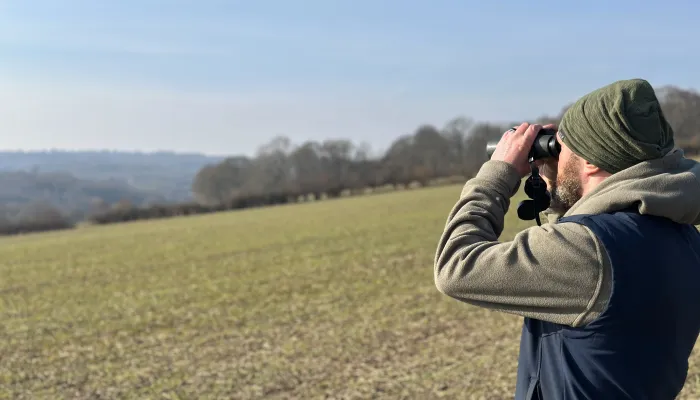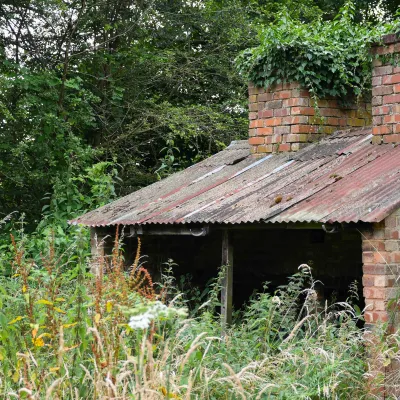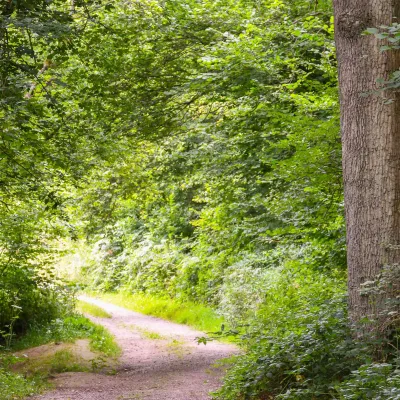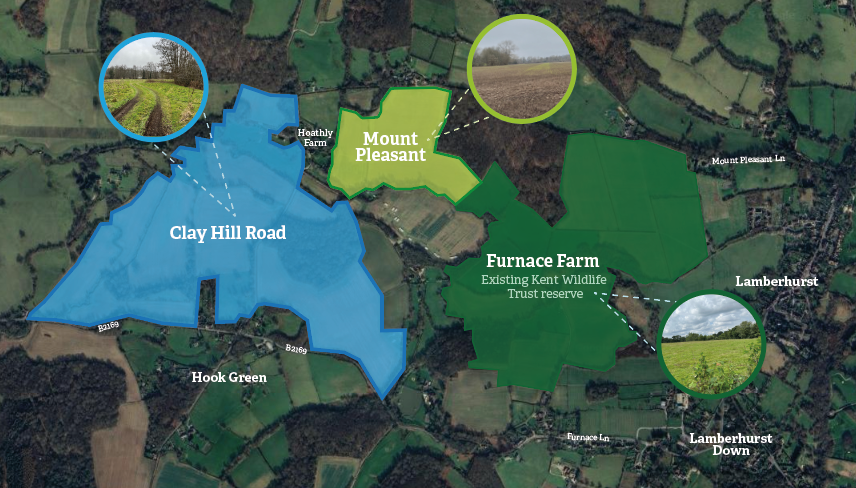A rare opportunity for people and nature
A rare chance to purchase Hoathly Farm is Kent’s largest opportunity in over two decades to create a near-continuous landscape for nature, where Wilder Grazing helps biodiversity thrive and habitats can be restored.
If we can secure this land over 613 acres could be reconnected and restored, creating one of the county’s most significant wilding projects in years. Together we can create a landscape where Wilder Grazing at Scotney Castle to the east adjoins Furnace and Hoathly Farms, creating a future where a wilding corridor connecting Kent and Sussex is possible.
Once secured, this ancient landscape turned marginal arable land, will be returned to nature, creating a dynamic nature reserve where wood pastures, species-rich meadows, woodlands and hedgerows will replace land that has been intensively farmed for decades.
However, time is running out. Generous donors have committed match funding of up to £500k already. But we urgently need to raise an additional £500k to unlock the full amount. This is a once-in-a-lifetime opportunity for nature, and we are working hard to secure funding but need your help.
The campaign ends 24th May! Thank you for all of your generous donations so far...
Creating a wild landscape
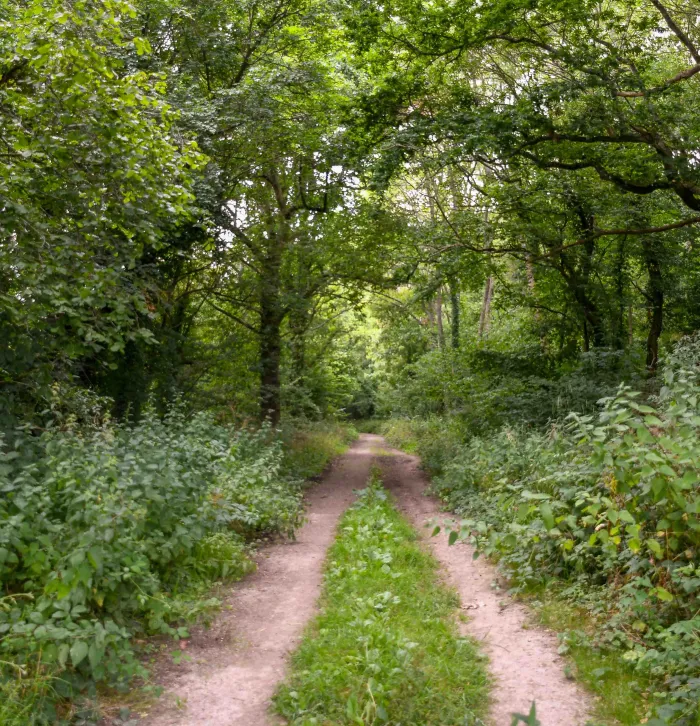
A new wild landscape for people and nature
Stretching almost three miles westwards from Lamberhurst, this major land acquisition would create one of the county’s most significant wilding projects in years. Increasing biodiversity and abundance in this landscape will significantly benefit the surrounding community by enhancing ecosystem services that support health, wellbeing, and the economy.
Restored to a thriving natural system the landscape will improve air and water quality, store carbon to combat climate change, and reduce flooding risks. The diverse habitats across the landscape will support food security through pollination and soil health while also creating green spaces that boost mental and physical wellbeing.
Together, we could create a place where biodiversity thrives and where lost species such a Pine Marten could one-day return. First, we must secure the land then, through replanting of former hedgerows and the introduction of a small herd of old English breed cattle and a drove of pigs, this landscape could flourish once more.
Restore and Connect
The Farm
Bordering Furnace Farm, an existing Kent Wildlife Trust reserve, Hoathly Farm has been intensively farmed for decades and no longer yields the returns needed to be viable without flooding the land with pollutants. Split into three plots, we are focusing our efforts first and foremost on securing 36 acres at Mount Pleasant, and 168 acres at Clay Hill.
The River Teise runs through the landscape, still following many of its original meanders; by restoring the landscape we can recreate a grass and woodland complex along the valley bottom, improving water quality, reducing run off and providing flood prevention. As green spaces flourish and biodiversity returns, the health benefits for our community will be felt in abundance. Exploring natural spaces has been proven to increase mental and physical wellbeing and help us to disconnect from digital pressures.
For our children, this has never been more important. If we can recreate a thriving, biodiverse landscape here, we can ensure that they have the chance to connect with nature now, and for years to come. Once lost, this opportunity is gone forever, but together we can protect this land for future generations.

